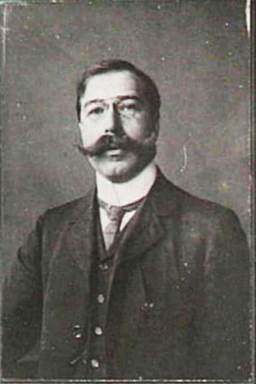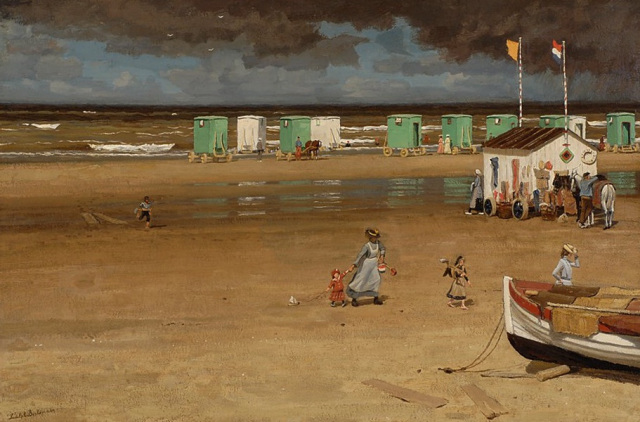Ludolph Berkemeier on:
[Wikipedia]
[Google]
[Amazon]
 Ludolph Georg Julius Berkemeier (20 August 1864,
Ludolph Georg Julius Berkemeier (20 August 1864,
@ RKD. While there, he came under the influence of the newly emergingLudolph Berkemeierstraat
@ PostCode.
 Ludolph Georg Julius Berkemeier (20 August 1864,
Ludolph Georg Julius Berkemeier (20 August 1864, Tilburg
Tilburg () is a city and municipality in the Netherlands, in the southern province of North Brabant. With a population of 222,601 (1 July 2021), it is the second-largest city or municipality in North Brabant after Eindhoven and the seventh-larg ...
- 18 July 1930, Noordwijk
Noordwijk () is a town and municipality in the west of the Netherlands, in the province of South Holland. The municipality covers an area of of which is water and had a population of in .
On 1 January 2019, the former municipality of Noordwij ...
) was a Dutch landscape and cityscape painter; associated with the Düsseldorfer Malerschule and the Hague School
The Hague School is a group of artists who lived and worked in The Hague between 1860 and 1890. Their work was heavily influenced by the Realism (visual arts), realist painters of the French Barbizon school. The painters of the Hague school genera ...
.
Biography
For two years, he attended theKunstakademie Düsseldorf
The Kunstakademie Düsseldorf is the academy of fine arts of the state of North Rhine Westphalia at the city of Düsseldorf, Germany. Notable artists who studied or taught at the academy include Joseph Beuys, Gerhard Richter, Magdalena Jetelová, ...
, where he studied landscape painting with Eugen Dücker
Eugen Gustav Dücker (also ''Eugène Gustav Dücker''; , in Arensburg (now Kuressaare, Estonia) – 6 December 1916, in Düsseldorf) was a Baltic German painter, in the Romantic atyle, associated with the Düsseldorfer Malerschule.
Biograph ...
.Biographical notes@ RKD. While there, he came under the influence of the newly emerging
Barbizon school
The Barbizon school of painters were part of an art movement towards Realism in art, which arose in the context of the dominant Romantic Movement of the time. The Barbizon school was active roughly from 1830 through 1870. It takes its name f ...
. Upon graduating, he took a study trip to Wiesbaden
Wiesbaden () is a city in central western Germany and the capital of the state of Hesse. , it had 290,955 inhabitants, plus approximately 21,000 United States citizens (mostly associated with the United States Army). The Wiesbaden urban area ...
.
He continued his studies at the Weimar Saxon Grand Ducal Art School
The Grand-Ducal Saxon Art School, Weimar (German:Großherzoglich-Sächsische Kunstschule Weimar) was founded on 1 October 1860, in Weimar, Germany, by a decree of Charles Alexander, Grand Duke of Saxe-Weimar-Eisenach. It existed until 1910, when i ...
, where he worked with Theodor Hagen, an early German Impressionist
Impressionism was a 19th-century art movement characterized by relatively small, thin, yet visible brush strokes, open composition, emphasis on accurate depiction of light in its changing qualities (often accentuating the effects of the passage ...
. But, despite a brief flirtation with that style, when he returned to the Netherlands he found himself more attracted to the Hague school, which was heavily influenced by the Realism
Realism, Realistic, or Realists may refer to:
In the arts
*Realism (arts), the general attempt to depict subjects truthfully in different forms of the arts
Arts movements related to realism include:
*Classical Realism
*Literary realism, a move ...
of the Barbizons. He eventually settled in Baambrugge
Baambrugge is a village on the river Angstel in the Dutch province of Utrecht.
It is a part of the municipality of De Ronde Venen and lies about 14 km southeast of Amsterdam.
In 2001 the village of Baambrugge had 925 inhabitants. The built-up ...
.
In 1896, he suddenly decided to move to Noordwijk, where he established a studio and sold painting supplies. Later, he was able to qualify for a government pension. He continued to develop his style by taking lessons in plein aire
''En plein air'' (; French for 'outdoors'), or ''plein air'' painting, is the act of painting outdoors.
This method contrasts with studio painting or academic rules that might create a predetermined look. The theory of 'En plein air' painting ...
painting from Jan Hillebrand Wijsmuller
Jan Hillebrand Wijsmuller (13 February 1855 in Amsterdam – 23 May 1925 in Amsterdam) was a Dutch painter. He belongs to ''The 2. Golden Age of Dutch Painting''.
He is an impressionist of the School of Allebé, better known as Amsterdam Impress ...
, who was an occasional visitor to the area, and collaborated with him on several works.
Many of his landscape paintings incorporate genre
Genre () is any form or type of communication in any mode (written, spoken, digital, artistic, etc.) with socially-agreed-upon conventions developed over time. In popular usage, it normally describes a category of literature, music, or other for ...
elements. He also created numerous still-life
A still life (plural: still lifes) is a work of art depicting mostly inanimate subject matter, typically commonplace objects which are either natural (food, flowers, dead animals, plants, rocks, shells, etc.) or man-made (drinking glasses, boo ...
s and book illustrations. For many years, he was an active member of Arti et Amicitiae
Arti et Amicitiae (lat .: For Art and Friendship) is a Dutch artist's society founded in 1839, and located on the Rokin in Amsterdam. The Society (also called Arti for short) has played a key role in the Netherlands art scene and in particular i ...
. A small street in Noordwijk has been named after him.@ PostCode.

References
Further reading
* Baumgärtel, Bettina: ''Die Düsseldorfer Malerschule und ihre internationale Ausstrahlung 1919–1918'', Michael Imhof Verlag, Petersberg 2011, * Bernt, Walter: ''Die Niederländischen Maler und Zeichner des 17. Jahrhunderts'', Vol.2, Bruckmann Verlag, Munich 1980,External links
{{DEFAULTSORT:Berkemeier, Ludolph 1864 births 1930 deaths 19th-century Dutch painters 20th-century Dutch painters Dutch landscape painters Hague School People from Tilburg Düsseldorf school of painting